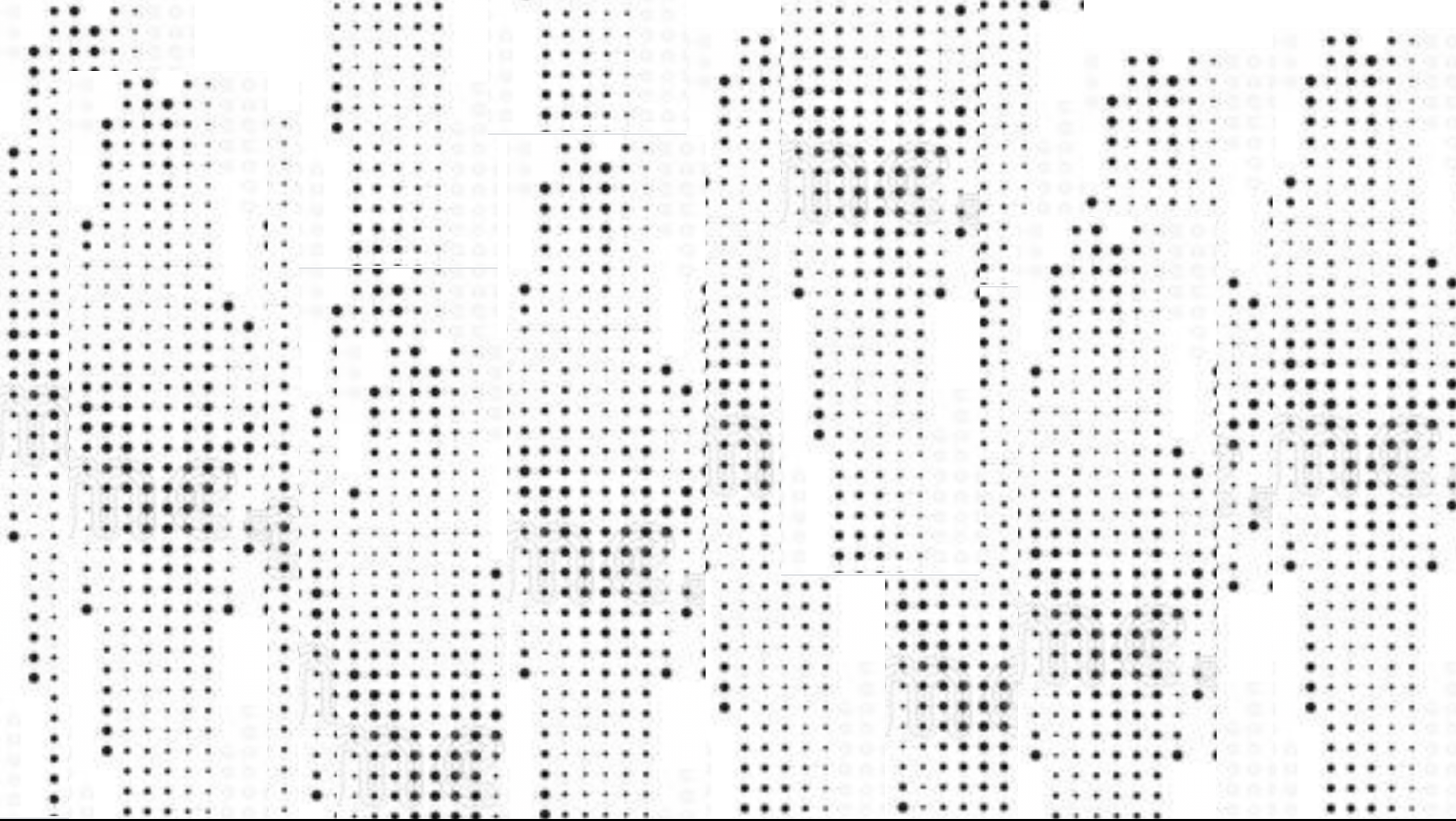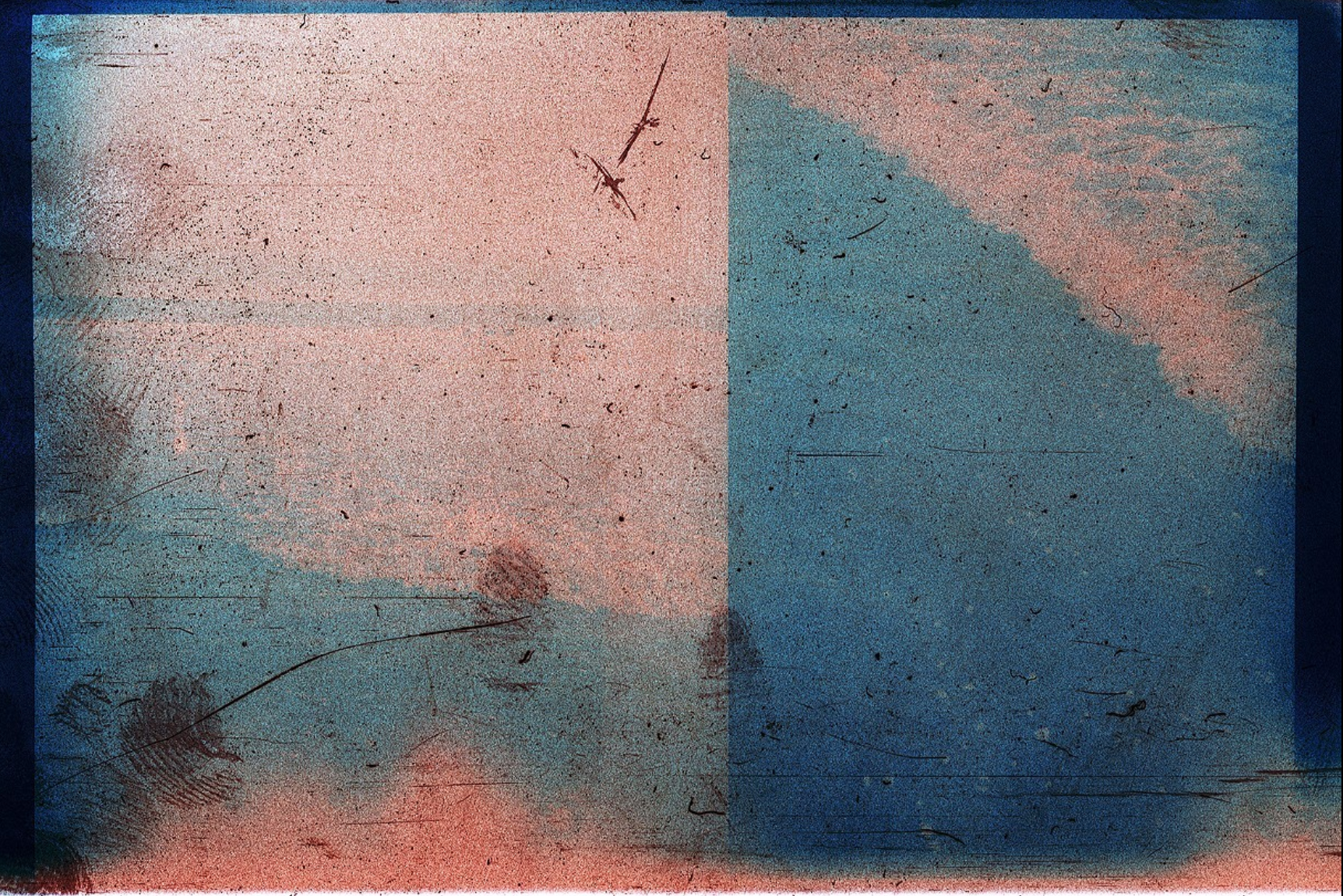
KIMBERLY JUANITA BROWN
BLACK ELEGIES
IN
SIGHT & SOUND
If an elegy is a lament for the dead presented in poetic verse, how might Black elegies articulate this lament in ways that exist beyond those parameters?
In an effort to protectively evade further harm, what are some of the artistic strategies that exist in Black elegies?
What might be the look, the sound, of this release?


This CARE SYLLABUS module is concerned with the place of mourning and Black subjectivity. Specifically, Black Elegies in Sight & Sound explores representations of grief that exist outside of the genre of poetry, where it’s possible to expand notions of mourning beyond a single genre or medium. The six textual offerings, presented here as a set of three dialogues, are indicative of the many ways Black artists have attempted to circumvent further external harm by navigating the delicate terrain of what Okwui Enwezor calls a “national emergency of Black grief.” [1] Since Black grief is almost never considered a national emergency, Enwezor’s words hold particular power. With music, painting, film, and a sculptural site-installation, the artistic representations included in this module, both abstract and figurative, negotiate the parameters of mourning while Black, with the heavy burden this entails. These offerings are a part of the representational legacy of Black cultural production that coheres around pathways of survival anchoring Black grief.
-Kimberly Juanita Brown
[1] Okwui Enwezor, Grief and Grievance: Art and Mourning in America, Phaidon, 2020, 7.


A Roundtable on Black Elegiac Form: Kimberly Juanita Brown, Dell Marie Hamilton, Toby Sisson, and Amanda Russhell Wallace.
February 2021
Kimberly Juanita Brown in conversation with Victoria Papa and Levi Prombaum, members of the CARE SYLLABUS team.
January 2021

Dialogue 1: Kahlil Joseph, Black Mary; and Carolina Chocolate Drops, Snowden’s Jig
Kahlil Joseph, Black Mary (Ft. Alice Smith), 2017
It’s thirteen seconds before you see Alice Smith in Kahlil Joseph’s short film, Black Mary. You hear her voice two seconds before you see her. It’s haunting, this entrance in the film by Smith, who is singer, spirit, and muse. Black Mary, commissioned by the Tate Museum, is an ode to the photographic oeuvre of Roy DeCarava and merges sound with deeply-saturated images of Black subjectivity. Smith is the focal point; the center of the text. It is her voice you follow. It is her world you enter. She sings a rendition of “I Put a Spell on You” and you are spellbound. The tone of the song betrays its lyrics. Or maybe it doesn’t. Made famous first by Screamin’ Jay Hawkins and Nina Simone, Smith’s remake is unlike any other that exists. It possesses all of the soul and the edge of other performances but is cognizant of the plead, the tortured possessive quest.
Instead the song winds like a road, curved and smooth, but devoid of destination. Blackness is the destination and the mood is full of collective grief. It is an insistent wail that goes on for six and a half minutes. The tempo is slowed as Smith’s four octave vocal range glides in and out. A haunting. A love story. A prayer. A wail. An elegy. She is sparing with the lyrics, repeating words like “mine” and “I love you” until they are disaggregated from the form they once held and returned to their place of origin.
The film is an engagement with our very present moment of Blackness, of sight, sound, and of mourning. From the enclosure of interior space Smith sings while swaying back and forth, captured repeatedly alone or among others. Joseph’s gaze lingers long and lovingly over the subjects in the film, guided by Smith’s musical performance. As quiet as it is thunderous, the mourning properties of Black Mary hover and drift; they are on streets, inside homes, and on the faces of Black subjects Joseph wants you to see.
Carolina Chocolate Drops, Snowden’s Jig, 2010
In Conversation: Carolina Chocolate Drops and NPR Music (2010):
In 2010 the Carolina Chocolate Drops released their Grammy-Award winning album Genuine Negro Jig. The title track is a dreamy swaying instrumental piece that defies categorization. Even the title changes from Genuine Negro Jig to its new name—Snowden’s Jig, after the musical family who most likely authored the tune. The song is not properly located in one genre of musical production and it is not properly a jig. Hands, feet, fiddle and bones. Those are the instruments involved in making this song. So much of the body is necessary for the cadence of Snowden’s Jig. It’s heart pulse, mournful, joyous, subdued and ecstatic organizes the circular motif of the song. Not a dirge, but not a jig either. Snowden’s Jig illustrates the mandate of the sorrow song—to find a way—sonically—around the grief that resides within.
The band, then composed of Justin Robinson, Rhiannan Giddens, and Dom Flemons had placed the song in their repertoire when they were approached by Howard and Judith Sacks, authors of the book Way up North in Dixie: A Black Family’s claim to the Confederate Anthem. The Sackes’ tell the band about the Snowdens, an African American family of musicians from rural Ohio, performing in the middle of nineteenth century.
Their neighbor, Dan Emmett is one of America’s earliest white minstrel performers, made famous for one song in particular “Dixie”. The eldest Snowden brothers, Ben and Lew lived into the twentieth Century (Emmett died in 1904). The Snowden brothers’ Gravestone reads “Taught “Dixie” to Dan Emmett.” Way Up North In Dixie is the painstakingly researched story of the Snowdens and the circulation of their creative work. They composed and performed music and also traded songs with other musicians. It’s clear that Emmett was able to copyright at least some of the Snowdens’ music as his own, including, Dixie. Bridging the space between slavery’s end and decades beyond, Snowden’s Jig is a product of the folk—a folk song—a sorrow song—a praise song—a jig. One person’s spiritual, another’s wail. There is something evasive about its construction and its circulation. Is it possible that the Snowden’s performed fully aware their work was being co-opted by their neighbor? Did it change the tenor, the tone, of this expression? Did grief occupy space on the sonic arrangement of the song and could people hear it?

Dialogue 2: Jennie C. Jones, These (Mournful) Shores; and Toby Sisson, Black Tears
Jennie C. Jones, These (Mournful) Shores, 2020
Jennie C. Jones speaks about These (Mournful) Shores at The Clark Art Institute:
Image (left): Jennie C. Jones, These (Mournful) Shores, 2020
Powder-coated aluminum, wood, harp strings
Courtesy of the Artist and PATRON Gallery, Chicago and Alexander Gray Associates, New York.
Photo: Thomas Clark
In a recent site installation at the Clark Art Institute in Williamstown, MA, artist Jennie C. Jones creates These (Mournful) Shores, an aeolian harp extending the boundary of the granite wall overlooking a reflecting pool. Aeolian harp structures make impressive public art since so much depends on the capacity of the wind to provide an auditory assist. Jones’s installation haunts the archive of the institute, whose holding strength is in 18th- and 19th-century European art. Where, Jones seems to ask, does one go to ponder the relationship of the transatlantic slave trade within these walls? Where is the sound of the middle passage in this archive?
A string instrument with origins in Africa, Asia, the Middle East and Europe, the harp is one of the oldest musical instruments still in existence today. The extent of its reach as a global instrument is particularly compelling in Jones’s hands. As the Clark Art Institute archive makes clear, there is an alternate conversation to have regarding western art history and European history, particularly when the traumatic events of the Atlantic slave trade are brought to bear on this archive.
With These (Mournful) Shores, sight and sound envelop the open air, offering a space of contemplation and redress for the enormity of loss accelerated through the middle passage. In the multiplicity of the “shores” in the title of the work, and the elongation of “mournful” therein, Jones sutures the violent occurrence of Black Atlantic slavery with its archival dissonance, that which continues into the present with little resistance. An encounter with These (Mournful) Shores is an encounter with the ghosts of slavery, and the unresolved histories that are largely unknown to others. It is to wait for the sound of that engagement with history to summon you. It is to respond when one is called. “While it may seem an inherent contradiction in terms,” Tina Campt writes in Listening to Images, “sound need not be heard to be perceived.” [2] The spectacular achievement of These (Mournful) Shores is the time it requires for visitors to hear anything at all when they approach the structure. You step up to the harp, examine the wood and the strings. Step back from it in order to widen your view, and you listen. For what the wind has to say, what the earth has deemed vital, and the atmosphere does the rest. “Sound can be listened to,” Campt continues, “and, in equally powerful ways, sound can be felt; it both touches and moves people.” These (Mournful) Shores is the boundless sonic saturation that places Black grief at its center. It matters not whether visitors hear a sound that matches their expectations but rather whether the reservoir of trauma is able to silently “touch” and “move” people. Be present in its auditory absence.
[2] Tina M. Campt, Listening to Images, Duke University Press, 2017, 6.
For more information on Jones’ installation, visit The Clark’s Website.
Toby Sisson, Black Tears, 2014 - present
Toby Sisson, Black Tear, 2015. An individual black tear.
7 x 5.5 inches. Ink and beeswax on paper.
IMAGE GALLERY: Black Tears
Toby Sisson’s Black Tears consists of 385 individual teardrops on wax paper. These tears are the culmination of Sisson’s meditation on the extra-juridical killing of Black people from Trayvon Martin to Michael Brown.
Visit the gallery to read Kimberly Juanita Brown’s framing words, to view a selection of images chosen by the artist, and to learn more about the artist and their work.

Dialogue 3: Amanda Russhell Wallace, Mo(u)rning Tea, Extracted;
and Dell Marie Hamilton, Emulsions in Departure
Amanda Russhell Wallace, Mo(u)rning Tea, Extracted, 2011
In Amanda Russhell Wallace’s 2011 short film, Mo(u)rning Tea, Extracted, the artist creates a meditation on Black women’s grief using the solitary reference point of her own body, alongside lines of verse from Octavia Butler’s novel Kindred, and Gayl Jones’s Corregidora. Kindred is placed alongside Corregidora so that Wallace’s artistic investments are most closely aligned with the memory of slavery as it impacts and imperils Black women in the present. Tethered to a corridor/hallway that splits the scene from the exteriority of the veiled figure in Black, walking back and forth through the interior space, and the interiority of another figure, also played by Wallace. Nearly silhouetted against light and shadow as a voice-over lays out the parameters of loss and mourning stalking Black female subjectivities, Wallace communes with the atmospheric enclosure of loss. The figure steps in and out of the frame as a haunting, gesturing toward the environment of grief that orients the film. Mo(u)rning Tea, Extracted utilizes the corporeal movement within a Black feminist framework that centers a process of grieving within the interiority of the architecture of careful enclosures, those that allow the transmission of the sight and sound of mourning to fill interior space.
Under the performed mechanics of setting up and preparing tea within a domestic space, Wallace enacts a sight/sound dialectic in order to mourn those who have passed. Instead of presenting herself as a widow mourning the loss of her husband, Wallace instead represents the loss (and subsequent grieving) of Black women’s acknowledged history under slavery as a layer of subterfuge that she must unpack with the practice of her deliberate embodiment. And thus, the two figures occupy the domicile at different moments, in light, and in shadow: one to articulate the lower frequencies of all that has been taken or lost, and the other to contextualize this loss as a series of movements in and out of the frame.
Wallace imbues the domestic sphere with a slow, methodical rhythm and flow, the contours of which haunt the discourse of slavery in the United States and beyond its borders. Each step is a gesture, towards the could-have-been that occupies slavery’s memory in an ambulatory refrain that encircles itself. The pace of the film is a modulation—parts of a whole— in communion with the present past of Black dispossession.
ARTIST’S STATEMENT
Developed for an MFA thesis in 2011, Mo(u)rning Tea, Extracted is a response to the various historical, scientific, psychological and sociological implications of Black African hair texture. Subject matter is represented by a condensed conversation occurring at the beginning, and with narration from two novels, Kindred by Octavia E. Butler and Corregidora by Gayl Jones, for the remainder of the piece.
ARTIST BIO
Amanda Russhell Wallace is a lens-based multimedia artist. Her work ranges from documentary family photography to experiments with time-based media. The work primarily locates itself in the archive (records, cemeteries, oral histories, etc.) as a site for “family reunion.” Her frequent practice of historical collaging uses remnants of speech, texts, and imagery to present and interrogate various loci of dissociation and dis-remembering within the formation and performance of selves across time. Wallace’s work has been shown and presented nationally and internationally in a variety of venues—galleries, conferences and symposia—including the Wattis Institute for Contemporary Arts, El Museu Valencià de la Il·lustració i la Modernitat (MuVIM), Newark Museum, Flux Factory and MASS MoCA.
She received the 2020 Center for Documentary Studies at Duke University Documentary Essay Prize for her series Mourning Breaks, for which she is currently developing a photobook.
For more information about Wallace’s work, visit the artist’s website.
Dell Marie Hamilton, Emulsions in Departure
(shot in 2010, printed in 2016)
Dell Marie Hamilton, Emulsions in Departure #12 (shot in 2010, printed in 2016). Medium Format Color Film/Unique Digital Scan, Archival pigment print on Hahnemuhle Bamboo. Print size: 24 x 32.25 inches. Image size: 24 x 29.2 inches.
IMAGE GALLERY:
Emulsions in Departure
Dell Marie Hamilton’s early work, Emulsions in Departure is a film/photography interplay that uses the imprint of Hamilton’s fingers to provide texture and tone to the materiality of loss.
Visit the gallery to read Kimberly Juanita Brown’s framing words, to view a selection of images chosen by the artist, and to learn more about the artist and their work.


MARCH 23, 2021
Haunting Tones: A Conversation
about These (Mournful) Shores
On March 23, 2021, artist Jennie C. Jones and Dr. Kimberly Juanita Brown spoke about Jones’ site-specific installation at The Clark Art Institute: These (Mournful) Shores, 2020, and about Dr. Brown’s CARE SYLLABUS module, “Black Elegies in Sight & Sound.” The conversation was available through the run of Jones’ exhibition at the Clark.
Want more information about the conversation? E-mail info AT caresyllabus DOT org.
The CARE SYLLABUS team extends our thanks to The Clark Art Institute for their generous support of this dialogue.




